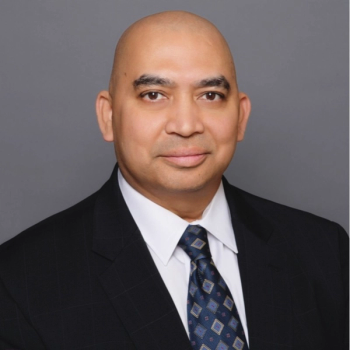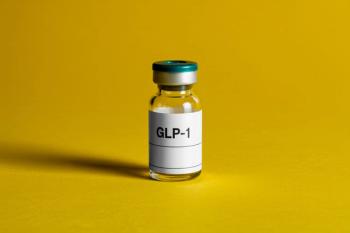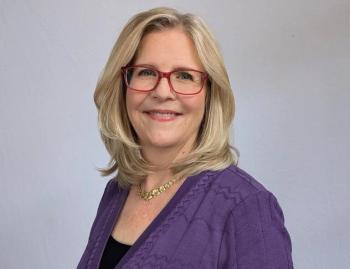
Psychiatry and the Dark Night of the Soul
The anatomy of unhappiness is more complex than DSM-5’s categories.
“There are many ways not to be happy that do not equal depression.”—
Christian Robbins was 16 when he took his life during the first month of the pandemic. According to
Of course, it is impossible to know. The Centers for Disease Control reported that between June 24, 2020 and June 30, 2020, about 1 in 4 young adults (aged 18 to 24 years) had seriously considered suicide in the 30 days before completing
It is tempting to hypothesize that Christian’s suicide was largely a result of a (bipolar) major depressive episode, possibly complicated by psychotic features. The pandemic and its attendant losses seem likely to have been the immediate precipitants. But
Moreover, there are good reasons, at times, to shift our perspective from the strictly clinical to the quintessentially spiritual; specifically, to what some mystics and theologians have called “the dark night of the soul.” First, though, we need to examine 2 closely related concepts that are not part of the DSM’s nosology.
Demoralization and Despair
Demoralization is succinctly described in
Demoralization is a syndrome clinically separated from depression. It is characterized by a combination of distress and subjective incompetence; the loss of meaning and purpose in life; the lack of perceived social support; a sense of being trapped and personal failure; a cognitive attitude of pessimism, and hopelessness/helplessness. Moreover, this psychological state has a significant role in negatively influencing a patient’s quality of life, coping styles, and dignity. It is associated with [suicidal] ideation; a higher wish for hastened death; and a worsening of the prognosis in patients affected by medical illness.
A more existential description of demoralization is provided by psychologist
Note that both descriptions involve a loss of meaning and purpose in life. We can easily envision many people suffering emotionally during the current pandemic who may not meet DSM-5 criteria for a major depressive disorder, but who would fit these descriptions of demoralization—and who might well become suicidal because of that mental and emotional state.
Despair
In a recent piece titled, “
Despair is understood broadly as “an entire want of hope.”8 I believe Gilbert is correct in conceptualizing this as an existential problem—with important implications for psychiatry. Indeed,
Importantly, whereas many participants with depression also reported despair, most individuals reporting despair did not meet formal criteria for a depressive disorder.9 The import of the Copeland et al study is simply this: we must look beyond the DSM categories of depression if we are to recognize young people (and probably others) who are truly suffering and at risk for substance abuse and suicide.
The Dark Night of the Soul
The phrase, “dark night of the soul” is often used informally to describe an extremely difficult and painful period in one’s life, for example, after the death of a loved one; the break-up of a marriage; or the diagnosis of a life-threatening illness. For many, the loneliness, isolation and fear associated with the coronavirus disease 2019 pandemic is, indeed, a dark night of the soul. There is nothing wrong with these informal usages, and they have obvious links to the concepts of demoralization and despair, as we have defined them. But they differ significantly from the original meaning and context of the phrase, as first conceived by the Spanish mystic, John of the Cross (1541-1597 AD).
John was a member of the Carmelite religious order, which he was trying to reform. The thanks he got was imprisonment by his Carmelite brethren, during which John composed his remarkable poem, “
On a dark night,
Kindled in love with yearnings–oh, happy chance!–
I went forth without being observed,
My house being now at rest.
John’s poem is essentially a spiritual odyssey. It recounts “
Surviving the Dark Night
In his book, Dark Nights of the Soul, the psychotherapist and former Catholic monk, Thomas Moore, makes an important observation. He writes, “The dark night calls for a spiritual response, not only a therapeutic one.” The dark night calls upon the affected person “to remain in the present, not bound or deluded by the past and not imprisoned in a fixed and defensive idea about the future…the most difficult challenge is to let the process take place, and yet that is the only release from the pressure of the dark night.”1
Sadly, not everyone will survive the dark night of the soul. Some of those Moore mentions, like the poet Anne Sexton, will die by their own hand. Those who do survive have come to realize, as Moore puts it, that “life is never as bright and successful and meaningful as you might imagine”.1 And yet, these survivors have found—or rather, created—new meaning in their lives.
Moore cites as an example the pianist Leon Fleischer, who died recently at the age of 92. At the age of 36, Fleischer suffered a mysterious neurological affliction that essentially crippled his right hand and nearly ended his career. None of the treatments he received helped, and Fleischer fell into a 2-year period of despair, to the point of considering suicide. But then, an epiphany:
The Midwife and the Dark Night of the Soul
As therapists, we need, in the first place, to appreciate and recognize the dark night of the soul as it afflicts and transforms our patients. We also need to recognize and assess the degree of demoralization and despair our patients may be experiencing, as these have implications for substance abuse and suicidality.
At the same time, we need to distinguish the dark night of the soul from various states of disease and disorder, such as major depressive disorder—which, in some unfortunate cases, may be the outcome of an unsuccessful spiritual journey. The dark night itself is not a disease, but part of the price we pay for being vulnerable human beings.
We need not be observantly religious to help our patients through their dark night, nor need we enter into the mystical world of John of the Cross. Rather, we can act as midwives to our patients’ inner transformation—supporting and encouraging them as they struggle to give birth, often painfully, to new meaning in their lives. As philosopher Peter Wilberg has put it, this kind of healing: “is no longer identified with mental, emotional or bodily ‘recovery’ but rather, with self–discovery – the birth of a newly felt bodily sense of self…[and] the metaphor of
Dr Pies is professor emeritus of psychiatry and lecturer on bioethics and humanities, SUNY Upstate Medical University; clinical professor of psychiatry, Tufts University School of Medicine; and editor in chief emeritus of Psychiatric TimesTM.
What do you think? Share comments with your colleagues by emailing
References
1. Moore T. Dark Nights of the Soul. Gotham Books; 2004.
2. Wan W. For months, he helped his son keep suicidal thoughts at bay. Then came the pandemic. The Washington Post. November 23, 2020. Accessed December 2, 2020.
3. Czeisler MÉ, Lane RI, Petrosky E, et al. Mental health, substance use, and suicidal ideation during the COVID-19 pandemic — United States, June 24–30, 2020. MMWR Morb Mortal Wkly Rep. 2020;69:1049–1057.
4. Bower B. ‘Deaths of despair’ are rising. It’s time to define despair. ScienceNews. November 2, 2020. Accessed December 2, 2020.
5. Battaglia Y, Zerbinati L, Piazza G, et al. The use of demoralization scale in Italian kidney transplant recipients. J. Clin. Med.2020;9,2119.
6. Schumaker J. The demoralized mind. New Internationalist. April 1, 2016. Accessed December 2, 2020.
7. Gilbert K. Dying without a dream. Psychiatric Times. Nov. 24, 2020. Accessed December 2, 2020.
8. “Despair, n.” Oxford English Dictionary. Oxford University Press; 2020.
9. Copeland WE, Gaydosh L, Hill SN, et al. Associations of despair with suicidality and substance misuse among young adults. JAMA Netw Open. 2020;3(6):e208627.
10. St. John of the Cross. The Dark Night. The Collected Works of St. Jon of the Cross. Trans. Kieran Kavanagh and Otilio Rodriguez. ICS Publications; Revised edition, 1991.
11. Loreena McKennitt. The dark night of the soul. Accessed December 2, 2020.
12. The Dark Night of the Soul. Accessed December 2, 2020. https://makeheaven.com/st-john-of-the-cross.html
13. Huizenga T. Leon Fleisher, the pianist who reinvented himself, dies At 92. National Public Radio. Accessed December 2, 2020.
14. Wilberg P.
15. Maieutic. Merriam-Webster Dictionary. Accessed December 2, 2020.
For Further Reading:
Pies RW: Care of the soul in the time of Covid-19. Psychiatric Times. March 23, 2020. Accessed December 2, 2020.
Pies RW. Is the country experiencing a mental health pandemic? Psychiatric Times. Oct. 13, 2020. Accessed December 2, 2020.
Newsletter
Receive trusted psychiatric news, expert analysis, and clinical insights — subscribe today to support your practice and your patients.













